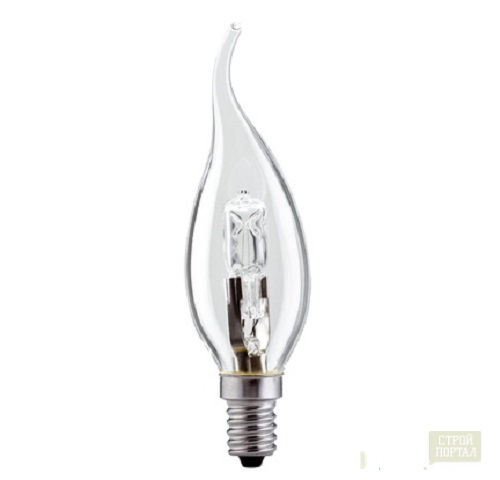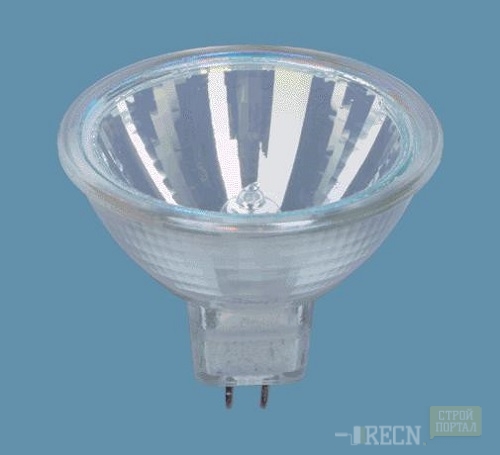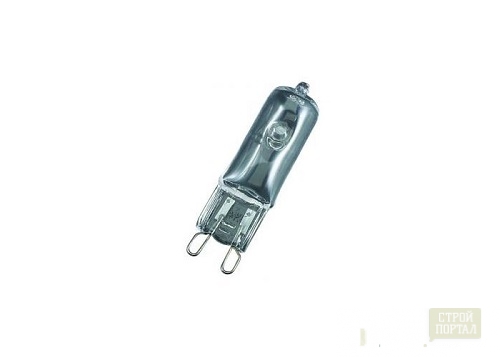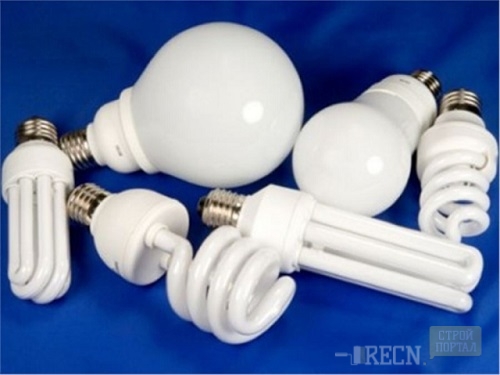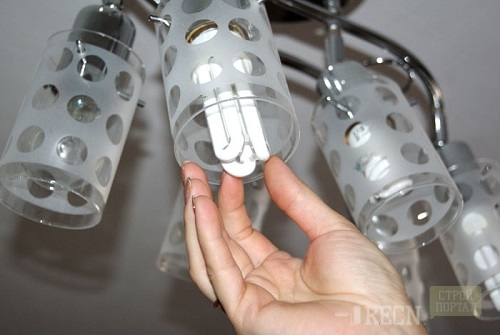
Replacing halogen lamps with their own hands Lighting

From the usual light bulb, the halogen lamp differs only by the fact that the light in it appears as a result of incandescent of the thin thread from tungsten. In fact, the "halogens" is just a more advanced model of an ordinary incandescent bulb.
Content
Features of halogen lighting sources
There is, however, a specific feature that conducts the boundary between the simple lamp and its halogen analogue. The latter is filled with gas, as part of which in minor quantities is bromine, chlorine, iodine (so-called halogens) or combinations thereof. Due to the presence of these chemical additives and the temperature set at a certain mode, the specialists managed to almost completely eliminate the darkening of the flasks and, accordingly, to ensure a stable light statement with a lamp. That is why it is permissible that the flask "halogens" was a small size: this can be achieved to increase the pressure in the gas filler, applying small volumes of expensive inert gases as a filling substance.
How do halogen incandescent lamps
Sources of light of this species work on the basis of a mechanism called a halogen cycle. From the surface of the hot tungsten spirals, atoms evaporate and, without reaching the walls of the flask, return back. The glass light bulbs does not black due to the lack of direct contact with them.
Halogen technology seems flawless, however, the lamp will not work forever. Tungsten atoms separated from one seat on the spirals are settled onto other sections. So, gradually in the halogen lamp processes begin, as a result of which certain areas of the lamp are thinned: the temperature increases there and the flow of separated atoms increases. Elevated evaporation of halogens leads to the inevitable burnout of the lamp.
All modern halogen lamps of small sizes, as it is the miniature volume of the flask that provides a relatively uniform distribution of atoms over the surface of the spiral, which determines the high efficiency of the halogen mechanism.
Advantages of halogen lamp
- Due to the high luminous return, it shines brightly during the entire life.
- Among all the modern light sources of light, the halogen lamp has a high-quality color reproduction and directional radiation. The luminous spectrum reproducible is considered the most comfortable for the eye.
- Compact convenient size.
- It serves half the longer in contrast to the usual incandescent lamp, while consuming much less electricity.
Disadvantages of halogen lamp
- The surface of the light bulb cannot be touched by unprotected fingers - there are fatty prints on the flask, which provoke glass melting in this place. The lamp take a hand wrapped into a piece of dry clean tissue, and the evaporated glass is wiping with medical alcohol. Replacing halogen lamps is performed only with the help of special gloves.
- Heating, the flask of the halogen lamp is withstanding the temperature to 500 ° C, it means that when installing such a light source, it is necessary, first of all, to remember and comply with the standards of fire safety (for example, to ensure that the distance between the overlap and the suspended ceiling is sufficient for safe lamp operation).
- The lamp with a halogen lamp reacts very sensitively to the network voltage drops. To avoid this, voltage stabilizers are used, and low-voltage lamps are connected via a transformer.
-
Some models of halogen lights require special placement during burning (for example, it will be highly burning all the stated lamp life will only in a horizontal position).
Main types of halogen lamps
Halogen light sources are low-voltage (up to 24 V) and network voltage (220 V). Also, "halogeries" differ depending on the design and destination.
Linear lamps
The "halogens" of a linear type of world first saw in the 60s of the XX century. However, since that time, their appearance remained the same - this is a quartz tube, on both sides, equipped with conclusions. The lighting thread lamp is attached to a special wire bracket.
A rather modest size of a lamp boasts good power - from 1 to 20 kW. High brightness and large power consumption make not very convenient use of linear "halogen" indoors, but they are very convenient as sources of projector lighting. Most of the halogen lamps of this species normally work exclusively under the condition of the horizontal location in space.
Today, the so-called linear halogen bulbs of bulging lights are used for internal lighting. These light bulbs have increased impact resistance.
Lamps with an external flask
This type of lamps refer to network voltage light sources. They, as a rule, directly replace ordinary incandescent lamps. The "halogens" with the outer glass bulb is equipped with standard E14 and E27 soclests. For such lamps, special lamps are not needed.
The outer glass flask reliably protects the inner quartz flask of the halogen lamp from dust and random touch. The "halogens" of this species can be equipped with various types of flasks with a dairy, transparent or matted surface. Halogen lamps with an external flask are conveniently used in small neat lamps, especially since there are decorative network voltage lamps (hex, candle-form).
Lamps of directional light (with reflector)
Standard sizes of such lamps - MR8, MR11 and MR16, the most popular of which MR16 with a diameter of the flask 50 mm. "Halogens" with reflectors have different angles of radiation.
The miniature flask of the lamp is equipped with a special reflector (reflector), which redistributes the flow of light in space. The lamp itself is attached to the center of the reflector. The most common today is halogen light bulbs with aluminum reflectors, guiding heat exclusively forward. In cases where it is unacceptable, halogen lamps are produced, equipped with interference reflectors, which remove heat only back.
There are so-called IRC halogen lamps, a special coating of which can reflect IR radiation. They are called the most economical, because the flask of such a lamp reflects the infrared rays back to the spiral, as a result of which the temperature of the spiral increases, and the weight loss decreases. Thus, compared with conventional halogen lamps, IRC halogen lamps are twice as fewer consumes electricity and serve twice a longer.
Halogen lamps with reflector are usually used in the organization of point directional lighting.
Capsule (finger) lamps
These are miniature capsules with "umpnits", which differ depending on which kind of gas body they are equipped with a transverse or longitudinal type. Fingering light sources equip open lamps without protective glasses. Most often, they are used in decorative luminaires embedded in furniture or ceiling.
Why the lamp flies prematurely
The developers of halogen lamps argue that the source of illumination of this type can perform its function without a significant loss of quality for 4,000 hours, while a slight decrease in the efficiency of its operation to the naked eye is not under force. Among the primary factors causing a premature damage of a halogen type lamp can be noted in the maintenance of the power grid, as well as too frequent on and off the lamp.
How to determine that the lamp with a halogen lamp is about to stop working? With prolonged use of "halogen" changes in the intensity of their glow, see pretty hard. However, there are other signals indicating that the lamp is subject to replacement: blinking, interruptions in operation. And if you find it difficult to name the year of the light bulb, do not doubt that it's time for its place to establish a new one.
Replacing the halogen lamp in the chandelier
Please note that the handling of the halogen lamp should be very delicate - it is very easy to damage it!
- First of all, turn off the electricity using the key switch (automata can not be touched).
- Carefully remove with the chandelier (lamp) all fragile and glass elements that are easy to spoil or break bye.
- Remove the old lamp from the chandelier, stretching it out of the cartridge.
- Insert a new light bulb, pre-put on the hands of the gloves. Recall once again that the surface of human skin is never perfectly clean, and therefore the flasks of the flasks will remain certain. These tracks under the influence of high temperatures are black and polluted glass, as a result of which the thermal mode changes, and the flask of the lamp heats up stronger. Thus, the operational resources of the lighting source are reduced, respectively, it will faster.
Recently, active disputes are going on whether it is possible to replace the "halogen" by the LED light bulb. In practice, the replacement of halogen lamps on LEDs without complete reconstruction of the entire lighting system is not possible. The snag is that the feeding transformers "halogen" cannot be considered alternating current instruments. This means that the LED light bulb, instead of giving light evenly, will flicker (complete inconsistency with technical and sanitary standards).
Numerous modifications and compact sizes made halogen lamps today as never popular. They are often used in suspended ceilings for the arrangement of the necessary accents in the interior. Often, "halogens" can be found in the design of shop windows, because they highly emphasize glass, metal and crystal products.







